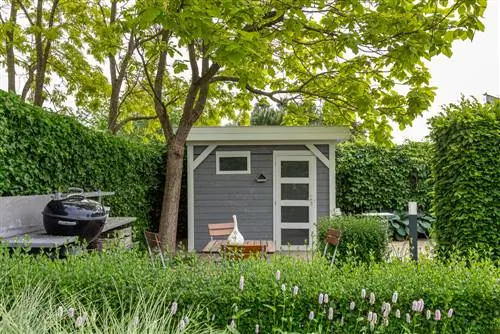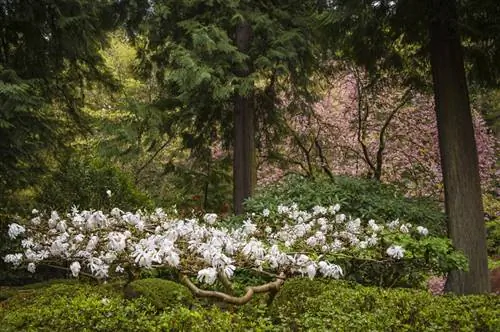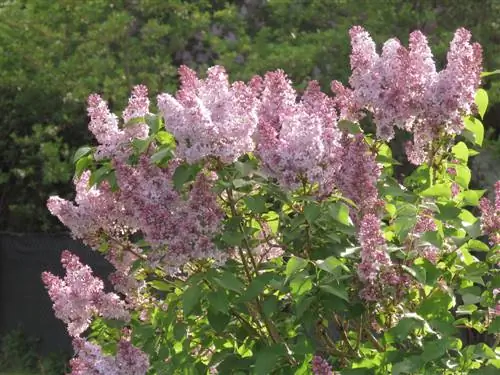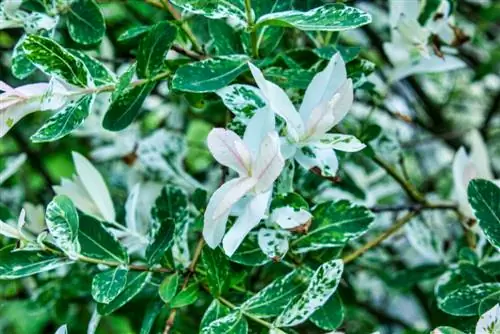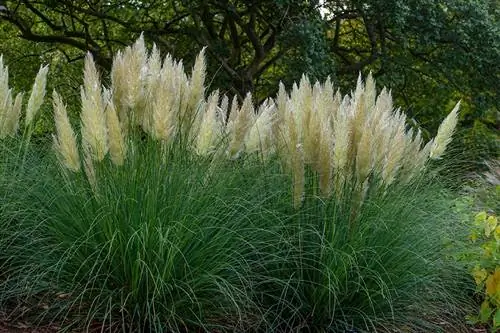- Author admin [email protected].
- Public 2023-12-16 16:46.
- Last modified 2025-01-23 11:22.
Do you only have a small garden and are afraid that a green enclosure would make the property more limited? We will show you in the following article that this is not the case. We will introduce you to, among other things, hedge plants that do not grow too quickly in height or width.
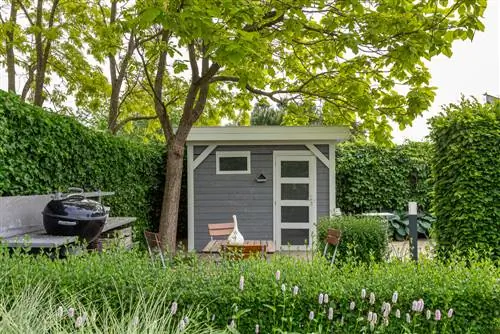
Which hedge plants fit into a small garden?
Slow-growing hedge plants or narrow-growing conifers such as false cypresses and yews are suitable for a small garden. Examples include olive willow, holly, Portuguese cherry laurel and Japanese maple. Regular pruning and eye-high planting can improve the feeling of space.
Conifers, also for small gardens
Many conifer species are not suitable for towel gardens, as thujas can grow very large and then take up far too much space. What is little known is that there are variants of these popular trees that do extremely well in limited spaces. Cypresses, for example, grow elegantly and narrowly in height. However, like the yew trees, which are also suitable for small gardens, they should be cut at least twice a year.
Slow-growing hedge plants
- Olive willow: This old, evergreen cultivated plant impresses with its delicate leaves. They don't just grow well in gardens located on the coast. Robust, windproof and undemanding, they also form pretty, green enclosures in other regions.
- Holly: This resembles the boxwood due to its small, deep green foliage. It is very frost hardy and even grows in rough, shady locations.
- Portuguese cherry laurel: This remains narrower than other representatives of the genus. Growing up to three meters high, it still provides sufficient privacy.
- Japanese Japanese maple: Growing slowly, this maple reaches a maximum height of 2.50 meters. When planted relatively closely, this plant can be used to create a beautiful enclosure with exceptionally attractive foliage.
Regular pruning
So that the hedge does not grow too sprawling in small gardens, it should be trimmed into shape at least twice a year. The uniform green of the topiary hedge forms a pretty backdrop for colorful flower beds, which you can create directly in front of the hedge to make the most of the limited space available.
Eye-high planting instead of privacy hedge
Especially in small gardens, a dense wall can increase the feeling of confinement. If your property is next to a beautifully landscaped neighboring garden or an undeveloped area, it is worth considering keeping the boundary low to ensure a clear view. Dog roses, for example, are suitable for this and are regularly trimmed a little to shape. A green wall made of tall perennials and pretty grasses also looks airy and appealing.
Tip
As an alternative to a hedge in a small garden, you can use a privacy fence that you cover with Virginia creeper, ivy, climbing roses or clematis.

